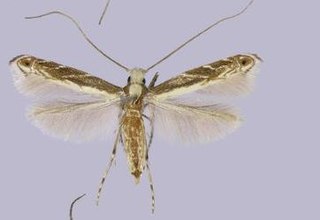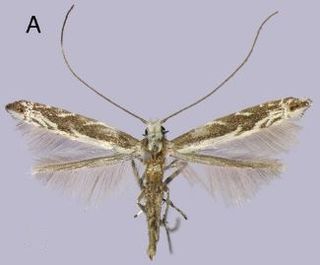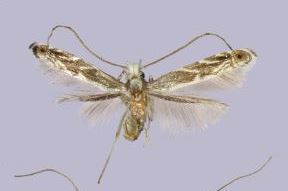
Breynia oblongifolia, commonly known as coffee bush, grows naturally in Australia and New Guinea as shrubs up to 3 m (10 ft) in height. The species produces alternate, distichous, ovate leaves 20–30 mm (0.8–1.2 in) long by 10–20 mm (0.4–0.8 in) wide. Small, green flowers are produced in spring and summer, and these are followed by orange or pink berries about 6 mm (0.24 in) diameter that turn black when fully ripe.

Glochidion ferdinandi, with common names that include cheese tree, is a species of small to medium–sized trees, constituting part of the plant family Phyllanthaceae. They grow naturally across eastern Australia, from south–eastern New South Wales northwards to northern and inland Queensland, in rainforests and humid eucalypt forests. Frugivorous birds such as pigeons, figbirds and parrots consume its fruit. The tree roots and branches are toxic to dogs, causing liver failure and death.

Epicephala is a genus of moths in the family Gracillariidae.
Epicephala australis is a moth of the family Gracillariidae. It is known from Queensland, Australia.
Epicephala ancistropis is a moth of the family Gracillariidae. It is known from Java, Indonesia.
Epicephala sphenitis is a moth of the family Gracillariidae. It is known from Bihar, India.

Epicephala albifrons is a moth of the family Gracillariidae. It is known from India, Indonesia (Buru), Sri Lanka, Thailand and Vietnam.
Epicephala spinula is a moth of the family Gracillariidae, one of the most primitive groups of ditrysian "micromoths". Within its family, it belongs to the subfamily Gracillariinae. Even though it was first scientifically studied in 1929, for many decades the specimens of this moth were mistaken for the related Australian species E. colymbetella, and their distinctness was only realized in 1986. It is found on the Marquesas Islands, where it occurs at least on Nuku Hiva, Ua Pou, and Fatu Hiva, and though little-known it is apparently not uncommon. The holotype specimen, a female, is USNM 100839.

Epicephala vitisidaea is a moth of the family Gracillariidae. It is found in Fujian, China and on the Ryukyu Archipelago.
Epicephala mirivalvata is a moth of the family Gracillariidae. It is found in Fujian and Hainan, China.
Epicephala lativalvaris is a moth of the family Gracillariidae. It is found in China.
Epicephala lanceolaria is a leafflower moth of the family Gracillariidae. The only known host of the larva is Glochidion lanceolarium which is pollinated by the imago.
Epicephala eriocarpa is a moth of the family Gracillariidae. It is found in Fujian, China.

Epicephala bipollenella is a moth of the family Gracillariidae. It is found in Fujian, China and the Ryukyu Archipelago.

Epicephala domina is a moth of the family Gracillariidae. It is found in China (Hainan).

Epicephala impolliniferens is a moth of the family Gracillariidae. It is found in China (Hainan).

Epicephala anthophilia is a moth of the family Gracillariidae. It is found on a few islands with high elevation in the Ryukyu Archipelago (Amami Island and Okinawa Island). The host plant, Glochidion acuminatum is distributed throughout Southeast Asia from southern Japan to India, so this species is likely to be found in other parts of the host plant's range.

Epicephala obovatella is a moth of the family Gracillariidae. It is found in the warm temperate to subtropical regions of Japan and in Taiwan.

Breynia cernua grows naturally in Australia and Malesia as a shrub up to 2 m (7 ft) in height.










